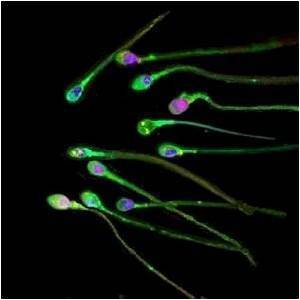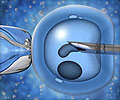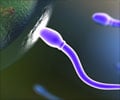- Amyloid fibrils found in protein mis-folding diseases have a normal function in reproductive biology
- Specifically, amyloid fibrils found in seminal that are known to enhance HIV infection also regulate phagocytosis of damaged spermatozoa
- Targeting fibrils for the development of HIV microbicide may hinder natural sperm selection
Determination of physiological role of amyloid fibrils
The similarities between HIV fusion to host cell and sperm fusion to oocyte led researches to hypothesize that fibrils promote fertilization. When this was tested through success rates of in vitro fertilization or IVF, it was observed that the physiologically present concentrations of fibrils suppressed IVF. When live cell imaging was performed to understand the mechanism in mice, it was noticed that the fibrils prevented sperm fusion to the oocyte by entrapping the spermatozoa. The same was indicative of human spermatozoa on computer assisted sperm analysis (CASA).
The entrapment is facilitated by limiting the motility of the sperm either partially or completely. On further studying the characteristics of the entrapped spermatozoa, it was noted that semen amyloids predominantly entrap sperms that are morphologically abnormal or defective. The research team was also able to conclude that the entrapped sperms are preferentially and efficiently degraded by the immune cells in the female reproductive tract.
Applications based on the newly hypothesized function of amyloid fibrils
- Prevents multiple sperms from fertilizing the egg, in case of which increased polyploidy may effect embryonic development negatively.
- Acts as a quality controller to ensure only the fittest sperm reaches the site of fertilization.
- Drug manufacturers must consider the positive role of amyloid fibrils in reproductive biology before developing HIV microbicides (for STD prevention) that target the fibrils present in the semen.
- Nadia R Roan, Nathallie Sandi-Monroy, Nargis Kohgadai,Shariq M Usmani, Katherine G Hamil, Jason Neidleman, Mauricio Montano, Ludger Ständker, Annika Röcker, Marielle Cavrois, Jared Rosen, Kara Marson, James F Smith, Christopher D Pilcher, Friedrich Gagsteiger, Olena Sakk, Michael O’Rand, Polina V Lishko, Frank Kirchhoff, Jan Münch, Warner C Greene. (2017) Semen amyloids participate in spermatozoa selection and clearance. doi:10.7554/eLife.24888
- Semen amyloids participate in spermatozoa selection and clearance - (https://elifesciences.org/articles/24888)
















